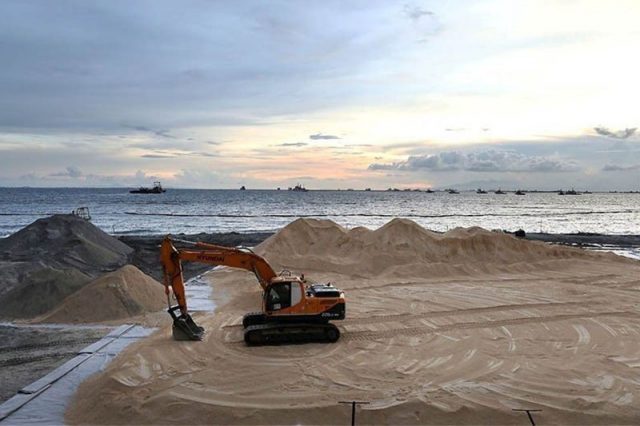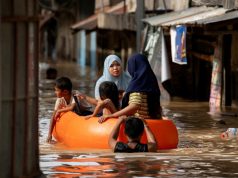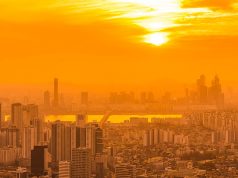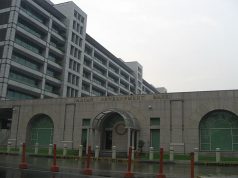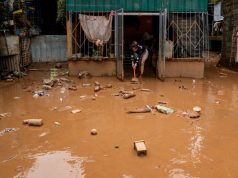Environmental concerns relating to reclamation projects in Metro Manila were once again brought up after a new land development in Manila Bay was talked about online.
Market surveillance analyst John Paul Tanyag on Sunday observed that “people are noticing the rise of a certain reclamation area” in the natural harbor.
He shared on his Twitter account screengrabs of some recent Facebook posts he has come across that show alleged pictures of a reclamation.
People are noticing the rise of a certain reclamation area in Manila Bay pic.twitter.com/0X8GTIFIIH
— JP (@dumidyeypee) September 4, 2022
“Parcels of land are already seen,” Tanyag wrote in another tweet with a close-up view of the project.
Parcels of land are already seen pic.twitter.com/vEwhY91TS8
— JP (@dumidyeypee) September 4, 2022
He later learned that the reclamation project is that of Horizon Manila.
Approved by former president Rodrigo Duterte, the project is envisioned as a self-contained mixed-use community that will have commercial, institutional and residential areas, an area suitable for port and port-related facilities, marina and tourism-related facilities, and other applicable uses.
It is also the first-ever Filipino project to have won the 2021 World Architecture Festival (WAFX). The WAFX Award is given to future projects that identify key challenges which architects will need to address in the coming years.
Meanwhile, Tanyag’s tweet caught the attention of some Filipinos who recalled past reports of Metro Manila at risk of being inundated due to rising sea levels.
“Who needs Ocean Park if Metro Manila will be under water in a decade,” a Twitter account commented in response to Tanyag’s post.
“Manila is [expected] to be submerged in water by 2050 right? Wouldn’t this just hasten it?” another Twitter user claimed.
“Wala na ang magandang sunset sa Manilay Bay shoreline by 2030!” a different Pinoy commented.
“And they thought magiging matagumpay sila diyan? Watch lands sink under water in few years,” another one tweeted.
Other reclamation projects in the National Capital Region include the 260-hectare Pasay City Reclamation Project, the 360-hectare Pasay Reclamation Project, Pasay Harbor City Reclamation Project, the Navotas Coastal Bay Reclamation and Development Project, the Manila Solar City Project, the Manila Horizon Reclamation Project, and the Manila Waterfront City Reclamation Project.
Earlier this month, members of the Pambansang Lakas ng Kilusang Mamamalakaya ng Pilipinas (PAMALAKAYA) urged Environment Secretary Toni Yulo-Loyzaga to take a stand against reclamation projects in Manila Bay.
They said that two projects—the 420-hectare reclamation project in Cavite and the 2,500-hectare airport project in Bulacan—have resulted in the landfilling of fishponds and the destruction of mangrove forests.
What’s in store for Metro Manila
In 2019, it was reported that by the end of the century, areas in the Philippines would likely be inundated due to rising sea levels as an effect of the warming of the earth.
Data from the findings of the science organization Climate Central revealed that 4.3 million people in the Philippines live in places that are below the high tide line.
By 2050, 5.2 million Filipinos will have occupied land that will be underwater at high tide—in a highly optimistic scenario.
The number will increase to 6.9 million by the end of the century.
An analysis of Greenpeace East Asia also revealed that the city of Manila is threatened to be consumed by the rise of sea levels and coastal inundation.
“The potential flood areas, should sea levels rise, include highly populated areas as well as commercial and cultural areas in the city center, high-density residential areas further from the city center, industrial areas, as well as places of government agencies,” the report read.
Those that could be potentially inundated are landmarks and tourist destinations such as Binondo, Intramuros, Malacañan Palace and the Jose Rizal National Monument.
Studies also suggest that the sea level in Manila Bay is rising by 13.24 millimeters per year. It added that Metro Manila is sinking by a rate of ten centimeters annually as a consequence of rapid extraction of groundwater due to population growth and urbanization.
Greenpeace country director Lea Guerrero said the data should spur the government “to strengthen disaster management planning and enable communities to cope with climate impacts.”

